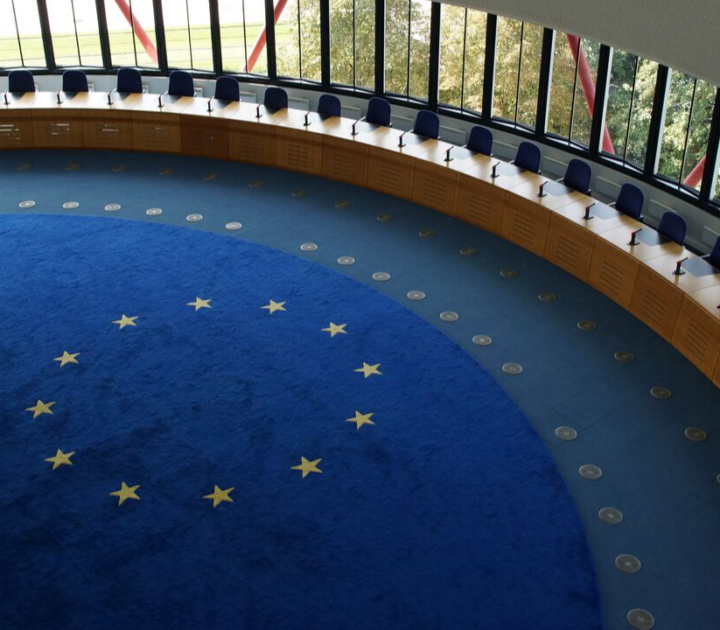
Why all businesses should embrace sustainability
This article has been updated on 9 May 2022 and was first written in November 2016
Paying attention to environmental, social, and governance (ESG) issues is becoming increasingly critical for all companies across all industries. In the latest McKinsey Global Survey, 83% of C-suite executives and investment professionals believe that ESG programs will generate more shareholder value in five years’ time than they do today. And in Accenture’s research on responsible leadership, companies with high ratings for ESG performance enjoyed average operating margins 3.7 times higher than those of lower ESG performers. Shareholders also received higher annual total returns to shareholders, outpacing poorer ESG performers by 2.6 times.
Simply put, sustainability is a business approach to creating long-term value by taking into consideration how a given organization operates in the ecological, social, and economic environments. Sustainability is built on the assumption that developing such strategies fosters company longevity.
As the expectations on corporate responsibility increase, and as transparency becomes more prevalent, companies are recognizing the need to act on sustainability. Professional communications and good intentions are no longer enough.
The following industry leaders illustrate what sustainability initiatives look like:
- Rated one of the world’s most sustainable corporations (Corporate Knights Global 100) and a green champion for over two decades, Schneider Electric offers technology and energy solutions to help companies shrink their carbon footprints. Schneider has accelerated its own formidable climate commitments to generate 80% “green revenues” by 2025 and to help its customers avoid up to 800 million metric tons of emissions.
- Finnish refiner Neste is pioneering solutions to conventional fuels and refining plastic alternatives and other materials. In March, Neste announced a billion-dollar investment in a joint venture with U.S.-based oil company Marathon Petroleum that it says will make it the world’s first and only renewable fuels maker with global capacity.
- Danish state-owned energy company Orsted has revolutionized the power industry in its bid to reduce the effects of climate change. Divesting from coal-powered plants, it has reinvested into wind farms and is now the largest offshore wind farm developer in the world. Orsted achieved this feat by encouraging its supply chain ecosystem to align – and in so doing has reduced carbon emissions and achieved its net zero goal.
- In the airline industry, JetBlue is at the vanguard of attaining carbon neutrality through offsetting its emissions, which in turn are invested into forestry, landfill gas capture, solar, and wind projects. The airline has aligned itself with the UN’s Sustainable Development Goal 13 (Climate Action) and is exploring renewable aviation fuel options for its fleet.
- Nike and Adidas have both seriously stepped up. Nike has focused on reducing its waste and using renewable energy, while Adidas has created a greener supply chain and pledged that, by 2025, nine out of 10 Adidas articles will be made from sustainable materials.
- Unilever and Nestlé have both taken on major commitments; Unilever is targeting net-zero emissions from its goods by 2039 and a deforestation-free supply chain by 2023. Nestlé has committed to achieving net zero greenhouse gas emissions by 2050 and having 100% recyclable or reusable packaging by 2025.
- Walmart, IKEA, and H&M have moved toward more sustainable retailing, largely by leading collaboration across their supply chains to reduce waste, increase resource productivity, and optimize material usage. Walmart has pledged that, by 2040, it will have zeroed out emissions from all its vehicles and transitioned to low-impact refrigerants, IKEA is making strides to using only renewable energy across its value chain, and H&M has pledged to use 100% recycled or sustainable materials by 2030.
- In biopharma, Biogen and Novo Nordisk have both worked toward energy efficiency, waste reduction, and other ecological measures. Biogen even tied part of its employees’ and management’s compensation to achieving its ESG goals, while Novo Nordisk has committed to net zero emissions across its entire value chain by 2045 at the latest.
- Pepsi and Coca-Cola have both set ambitious goals for reusable and refillable packaging, as well as improving water stewardship and replenishment.
These firms have all made strong commitments to sustainability, in large part through transparency and addressing material issues. They are embarking on a more sustainable journey, and all firms should follow suit over the next decade.
Two gaps to beware of
In order to address sustainability appropriately companies need to bridge two critical gaps:
- “The knowing – doing gap”: A study by BCG/MIT that I participated in found that whereas 90% of executives find sustainability to be important, only 60% of companies incorporate sustainability in their strategy, and merely 25% have sustainability incorporated in their business model.
- “The compliance – competitive advantage gap”: More companies are seeing sustainability as an area of competitive advantage, but it is still a minority – only 24%. However, all companies need to be compliant. Management should address these topics separately, not mesh them together. Compliance is holistic, a “must do”. For competitive advantage, only a few material issues count.
Companies that stand out in the area of sustainability address both gaps. They have evolved from knowing to doing and from compliance to competitive advantage. They also know the risk of getting this wrong. For instance promising and not delivering, or addressing material issues without being solid on compliance.
Some practical recommendations
Just like with overall strategy there is no “one right solution” on sustainability. The best solution depends on the ambitions and stakes at each company. Here are a few useful actions for all management teams to improve sustainability practices.
1] Align strategy and sustainability: Management needs to make sure that the strategy of the company and the sustainability efforts are aligned. Often we see divergence, which of course makes the sustainability efforts fragile, lacking real commitment and prioritization. But there are many good examples. One such example is Unilever’s Planet Positive initiative, designed to give more than the company takes from the planet through plans to protect and regenerate 1.5 million hectares of land, forests and oceans by 2030. Unilever says that is more land than it already uses to grow the renewable ingredients included in its beauty and personal care product range. And by 2025, the company says any plastic used in its packaging will be recyclable, reusable, or compostable.
2] Compliance first, then competitive advantage: First and foremost, companies need to address compliance, which often relates to regulations in waste management, pollution, and energy efficiency as well as human rights and labour responsibility. Compliance is also an issue that concerns investors. A recent survey suggests that investors increasingly shy away from compliance risks. According to the 2021 EY Global Institutional Investor Survey, 74% of institutional investors said they were more likely to divest from companies with poor sustainability performance, while 90% said they would now pay more attention to a company’s sustainability performance when making investment decisions.
3] Reactive to proactive: Many of today’s leading companies in sustainability, like Nike, Coca-Cola, Telenor, IKEA, Siemens, and Nestlé, have stepped up largely as a consequence of a crisis. Oil giant Shell, already the focus of activist protests over drilling in the Arctic, faced boycott calls due its purchase of cheap Russian crude oil after Russia invaded Ukraine in February. Shell rapidly backed down and said it will exit all its Russian operations and write down up to $5 billion as a result.
4] Quantify, including the business case: All companies struggle with quantifying the return on their sustainability investments. With regards to compliance this is a straightforward issue. With regards to areas of competitive advantage, however, companies need to link sustainability to a business case. But the ones that do form a relatively small group.
5] Transparency as a pre-condition: This is essential for assessing and improving sustainability practices. You cannot judge without transparency, simple as that. Transparency builds on the idea that an open environment in the company as well as with the community will improve performance. The only way for companies to accomplish transparency is through open communications with all key stakeholders built on high levels of information disclosure, clarity, and accuracy – as well as an openness to recognizing faults and improving practices.
6] Engage the Board: In the latest McKinsey Global survey, respondents were asked whether their companies track the impact of ESG programs on various stakeholder groups. The biggest percentage among those stakeholder groups, 51%, was for considering the impact on board directors “entirely or to a great extent”. This reinforces how important boards are in collaborations with key stakeholders such as NGOs, governments, and international organizations.
7] Engage your ecosystem: We see that collaboration is critical for efficient sustainability practices, particularly in solving crises and in shaping broader solutions. The MIT/BCG data showed that 67% of executives see sustainability as an area where collaboration is necessary to succeed.
8] Finally, and most importantly, engage the organization broadly: One good example of engagement is Salesforce, a company so committed to making every employee and department accountable to sustainability that it recently enshrined it into its core values. Now that sustainability is part of its DNA, the company can leverage its full might to advance climate action and further operationalize sustainability across its entire business.
In summary, sustainability is a major challenge, one that matters beyond individual companies. But a reassuring number of large companies are developing forward-thinking sustainability policies. It is really becoming clear that sustainability is a megatrend that simply isn’t going away!
Knut Haanaes is a Professor of Strategy and International Management at IMD.
Research sources
Sustainability Nears a Tipping Point
Sustainability: Collaboration and Leadership for Sustainability
Research Information & Knowledge Hub for additional information on IMD publications
Nespresso, the global leading brand in portioned coffee, is facing an existential threat. The company’s current market base, which consists primari...
By 2026, it's predicted that over 80% of organizations will have employed generative artificial intelligence (GenAI) in some capacity, up from less...
The case describes IKEA’s new approach to making an impact through IKEA Belgium’s “Welcome Home Project,” dedicated to assisting single-parent fami...
Choosing a CEO is a crucial decision for any company, but it becomes particularly complex in family businesses. This difficulty stems from the need...
Family businesses often have not only financial wealth but also nonfinancial values that make them different from nonfamily companies. For instance...
Leadership presence (LP) is widely acknowledged as a foundation of effective leadership. Historically, LP has been conceptualized as a collection o...
Research Information & Knowledge Hub for additional information on IMD publications
Research Information & Knowledge Hub for additional information on IMD publications
Research Information & Knowledge Hub for additional information on IMD publications
Research Information & Knowledge Hub for additional information on IMD publications
Research Information & Knowledge Hub for additional information on IMD publications
Research Information & Knowledge Hub for additional information on IMD publications
Research Information & Knowledge Hub for additional information on IMD publications
Research Information & Knowledge Hub for additional information on IMD publications
Research Information & Knowledge Hub for additional information on IMD publications
in I by IMD 10 April 2024
Research Information & Knowledge Hub for additional information on IMD publications



